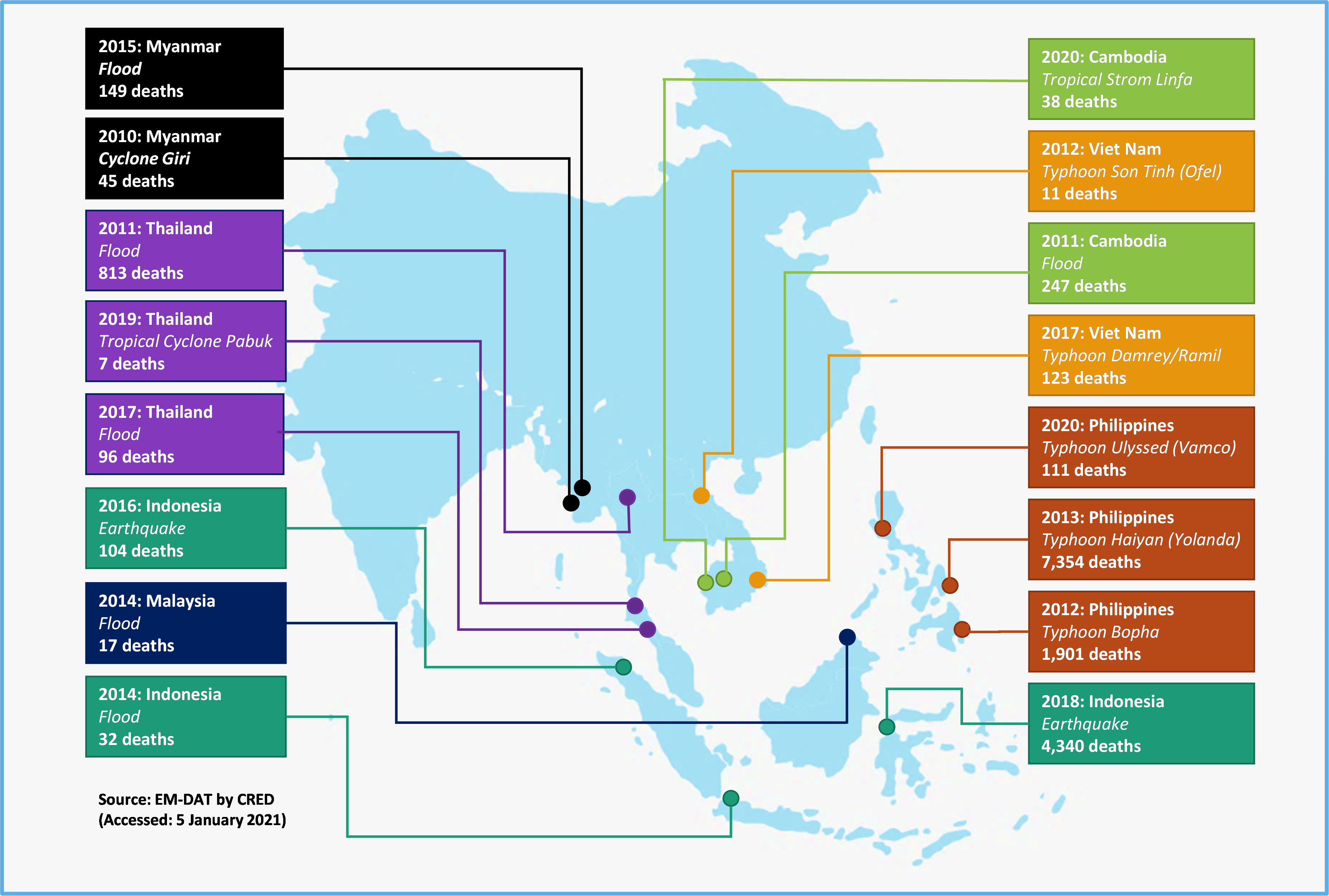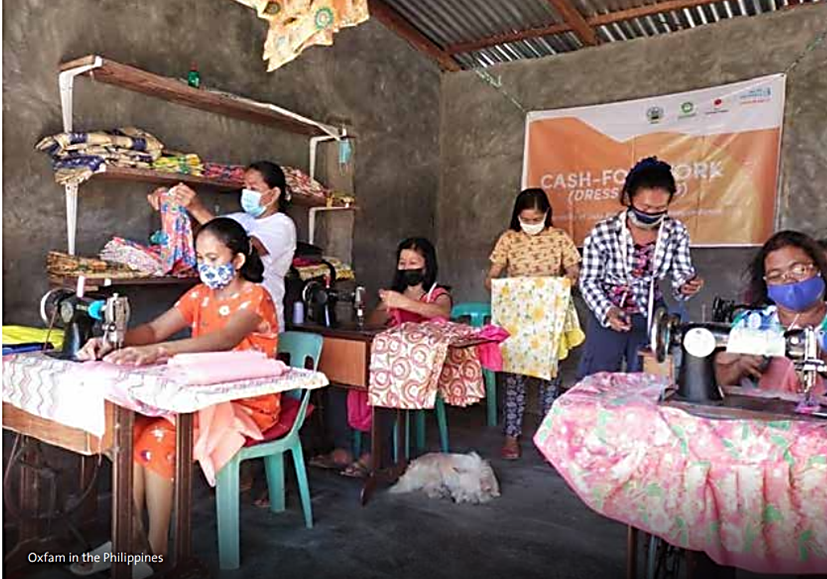Credit: Oxfam in the Philippines
When disaster strikes a community, how does it impact different people of different ages and genders differently? Surprisingly little research exists on this topic. To work towards remedying this research gap, Rapid Asia together with UN Women produced a research brief, available here – “Gender and Age Inequality of Disaster in Risk in Asia.” This brief explores how disasters impact people differently, provides a regional overview of risk and vulnerability – and links this with the ASEAN framework for disaster management, and illustrates central points using two case studies: the 2018 Sulawesi earthquake and tsunami, and the complex crisis in Mindanao.
Compiling this data was challenging, as very few datasets relating to disasters were disaggregated by gender and age – and, if they were, it was only for mortality rates, rather than covering more nuanced impacts (Figure 1). As the deadliest disaster in the region, the 2002 Indian Ocean tsunami is the most studied event, and the information shows us that socioeconomic status, age, and sex characteristics shaped survival patterns. As with other disasters, the mortality patterns from the tsunami showed us that the poorest were the most vulnerable, along with children and older adults, and women, for several possible reasons, including:
- Physical strength and skills (e.g., being able to swim)
- Women’s restrictive clothing
- Women were more likely to be at home (it was a Sunday)
In the aftermath of a disaster, women and girls continue to be disproportionately impacted by the destruction and economic hardship. The brief references a study looking at the longer-term disaster impacts which found an increase in infant mortality mainly of baby girls in the 24 months after Typhoon Haiyan, totaling an estimated 11,300 female infant deaths. The researchers argue that this is due to a ‘disinvestment’ in girls’ health and is driven by resource scarcity within the household; as evidence for this, infant girl mortality doubles when female infants have older sisters and doubles again if there are older brothers.
Figure 1 Resulting deaths in recent disasters in ASEAN States
The review helped to identify some key themes to help understand women and girls’ vulnerability and discrimination in disasters – these themes are:
- Livelihoods and incomes
- Nutrition and health
- Education
- Lack of protection and gender-based violence
- Access to services and aid
Women and girls have unique vulnerabilities due to pre-existing inequalities relating to the themes above, including:
- Inequalities in the distribution of income and access to credit
- Women’s restricted capacity to do paid work due to care burdens
- Scarce human resources and diminished incomes leading to parents pulling children out of school – especially girls
- Early marriages and pregnancies disrupting education
- Cultural norms around women eating last meaning they are left with smaller and less nutritious portions
- Health risks that disproportionately impact pregnant or lactating women
- Emergencies increasing the risk of violence against women and girls – coupled with a disruption of law enforcement or protective services
- Discrimination against women in the provision of disaster relief
- Post-disaster assessments which are designed without considering the needs of women
Despite these inequalities, women across the region show incredible resilience in the face of disasters and play crucial roles supporting their families and communities. For example, after the 2006 earthquake in Yogyakarta, women ensured food and water supplies, provided health care and trauma healing, and cared for people who needed it. Despite women’s capacity to do so, opportunities for women’s participation in disaster risk management are currently limited. The researchers of this brief argue that increased women’s participation and leadership in disaster responses is needed. Increased roles for women at all levels would lead to responses that are relevant and targeted to meet the unique needs of women and girls, and which lead to less loss of life overall, as women are able to engage with women humanitarian workers, and have direct lines to urgent and life-saving information.
If you found this article useful, please remember to ‘Like’ and share on social media, and hit the ‘Follow’ button never to miss an article. Download the full report here.
About the authors: Daniel Lindgren is the Founder of Rapid Asia Co., Ltd., a management consultancy firm based in Bangkok that specialises in evaluations for programs, projects, social marketing campaigns and other social development initiatives. Leilana Quinger is an independent consultant working with Rapid Asia as a member of their expert panel of consultants.

